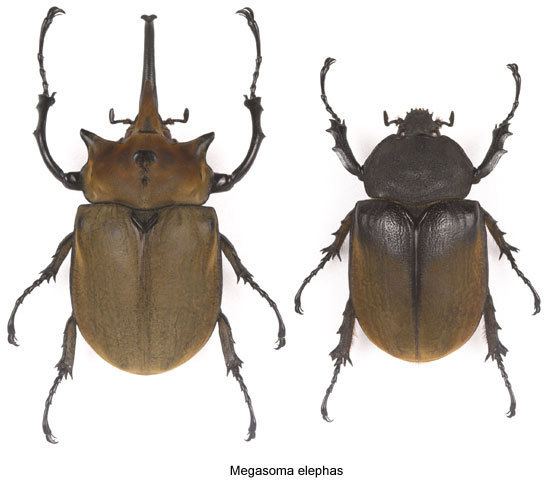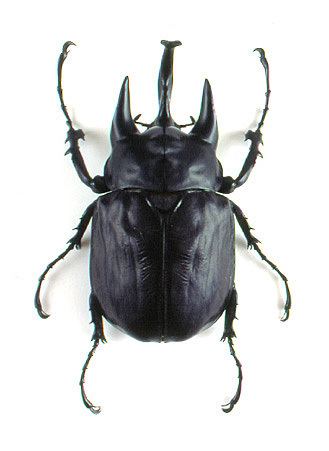Order Coleoptera Rank Species | Genus Megasoma Higher classification Megasoma | |
 | ||
Similar Megasoma, Beetle, Insect, Dynastinae, Actaeon beetle | ||
Elephant beetle display lanhm 2010 insect fair 720phd v08171
The elephant beetle (Megasoma elephas) is a member of the family Scarabaeidae and the subfamily Dynastinae. They are Neotropical rhinoceros beetles.
Contents
- Elephant beetle display lanhm 2010 insect fair 720phd v08171
- Angry elephant beetle devours hapless australian
- Appearance
- Size
- Location
- List of subspecies
- Breeding
- Food
- Behavior and habitat
- Potential Military Use
- References

Angry elephant beetle devours hapless australian
Appearance

Elephant beetles are black in color and covered with a coat of fine microscopic hairs. The hairs grow particularly thick on the beetle's elytra. The hairs give the beetle's body a yellowish color. Males have two horns protruding from the head and another from the prothorax. Females have no horns. The horns are used for defense, and in competition among males for food and mates.
Size

In size, elephant beetles range between 7 and 12 cm (2.75–4.75 in); males are sometimes even bigger. Males are around 2 to 3 times bigger than the females.
Location
Elephant beetles are located in southern Mexico, Central America, and in South American rainforests. Australia
List of subspecies
Breeding

Elephant beetle larvae develop in large decaying logs and take up to three years to develop into adult beetles, depending upon the subspecies. The female elephant beetle lays her eggs inside the decaying log or in the ground. Some weeks after that (usually 3) the eggs hatch into C-shaped larvae, white grubs with brown heads and six legs. The larval stage lasts around 29 months, during which time the grubs consume organic matter. The third and last stage, the pupal stage, lasts around 5 weeks at a temperature of 26 degrees Celsius. The life span of an adult elephant beetle is around one to three months.
Food
For their diet, elephant beetles eat the sap of particular trees and ripened fallen fruits. In captivity, they also eat exotic fruits such as pineapples, longan, lychee fruit, and bark from certain trees like the poinciana.
Behavior and habitat
Elephant beetles live in rainforests and are mainly active during the night. They are able to maintain high body temperatures with temperature decrease.
Elephant beetle population has been depleted by the destruction of the rain-forests, which has reduced their grounds for mating. In some countries such as Costa Rica, Nicaragua and others in Central America the male's head is used as charm necklace, decorated with gold. This has affected the population severely.
Potential Military Use
As part of a Pentagon-sponsored project, researchers at the University of California, Berkeley have implanted electrodes into elephant beetle pupae. This allows some remote control of the adults flying behaviour.
